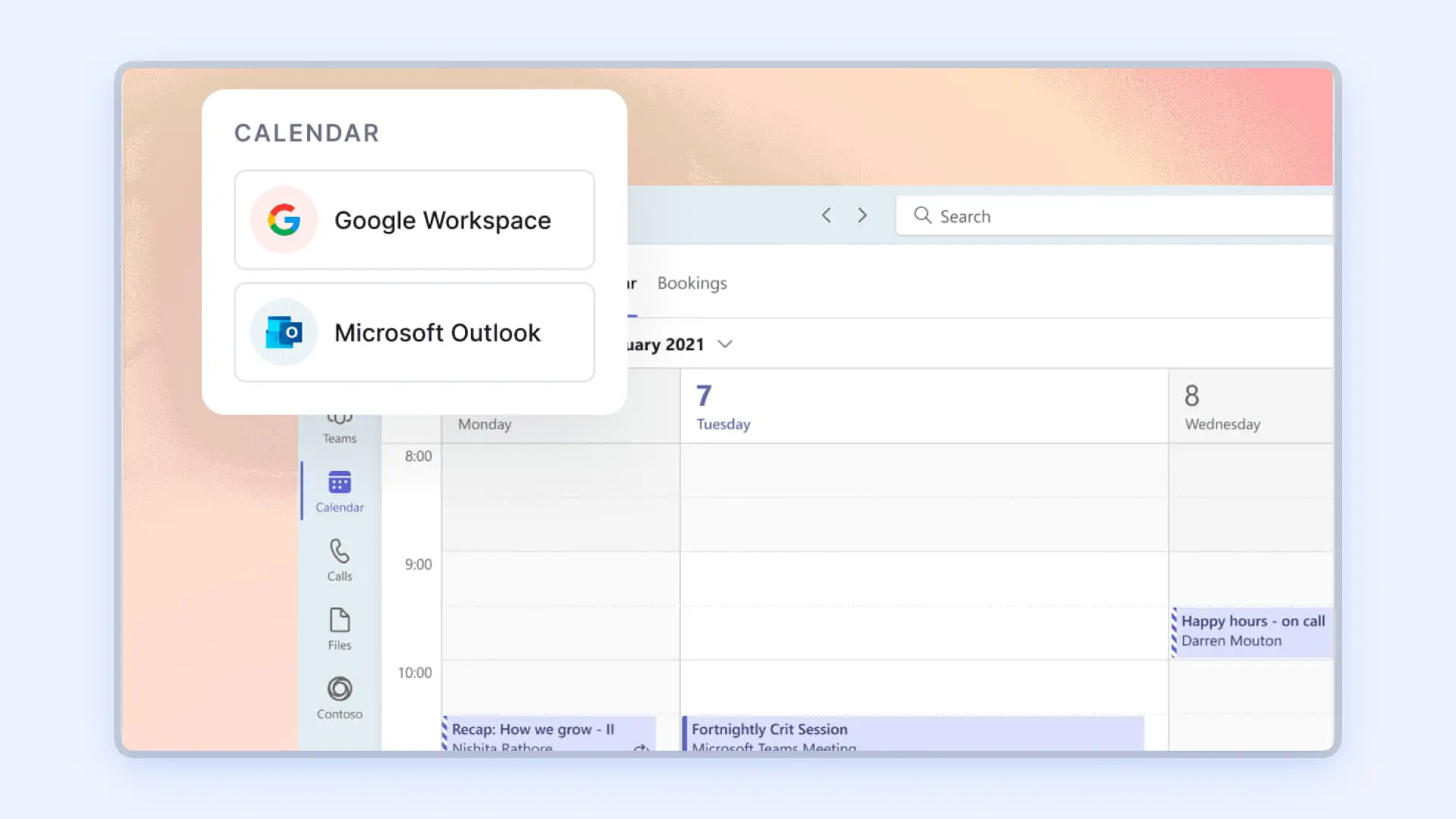Driven by the rise of hybrid remote work, office utilization is decreasing to less than half of pre-pandemic levels, prompting questions about the future of office spaces.
But it also creates a great opportunity: to reimagine the hybrid office and cater it to the needs of the hybrid workforce, who still want office days to foster connections and mentoring, as proven by remote work statistics.
The modern office looks and feels different. Social spaces, Meet spaces, Focus spaces, and Balance spaces each cater to specific needs and become the cornerstone of purposeful office environments.
What is Hybrid Office Design?
Hybrid office design is the strategic creation of office spaces that cater to a hybrid workforce's needs, combining remote and in-office work. This approach capitalizes on the opportunities presented by the rise of hybrid remote work, aiming to optimize employee engagement and productivity.
Hybrid office design combines remote and in-office work to optimize employee engagement and productivity. This approach includes Social, Meet, Focus, and Balance spaces to foster community, encourage collaboration, provide concentrated work environments, and enhance employee well-being.
Diverse office spaces positively impact engagement and satisfaction. Incorporating these spaces and involving employees in the design process tailors the office environment to their needs.
How do I build a hybrid office?
Research shows that offering a variety of spaces drives more employee engagement. It provides people with more opportunities to do their best work every day. At the same time, it also increases the sense that their company cares enough to deliver this to them.
Below, we go into each type of office space that hybrid offices should have. To go deeper, download our "4 Types of Office Spaces" eBook. Hopefully this will give you some great ideas for the office designs.
Social
More remote work also means that there is more isolation and loneliness. Feeling isolated while working from home is the biggest concern people identified, and the top reason to return to the office is to connect with co-workers. Research shows that people miss contact with coworkers the most from the physical office.
People want to have a sense of belonging at work. This is not only good for their well-being, but it also helps business results. A strong sense of community is the top indicator of people’s productivity. It also impacts their engagement, innovation, and commitment to the organization. Google even mentioned community as a top reason to continue to invest in physical offices.
People gather in different types of spaces and have “casual collisions.” They are the places where employees join before, during, and after work. This includes community spaces, lounges, pantries, coffee shops, outdoors, and entertainment spaces.
Together, they can help people interact with each other in a more impromptu, casual way. As Thomas Heatherwick, a leading office designer, said: “No Skype chat can replicate the “chemistry of the unexpected” that you get in person.”
Examples of Social spaces
Community Space:
As the most crucial category of office spaces, social spaces come in various forms. Most offices will strive to have the most prominent one, the principal community space, or the central “home” of the office, combining different functions into a lively environment, and the space itself can play many roles.

Lounges:
Next, lounges with or without touchdown spaces are also rather important. These are centrally located informal spaces for casual interactions and informal meetings.

Pantries/Kitchen:
Then, probably the most important space in most offices, pantries and kitchens serve not just as the place for employees to get their coffee, lunch, and snacks, but act as a communal area for them to have informal conversations.

Coffee shops:
We also cannot undermine the importance of integrated coffee shops, which can act as the “buffer zone” to facilitate meetings with guests just outside the area of the office.

Garden:
Gardens are proven to support the health and well-being of the employees while improving their engagement with their work.

Play Areas:
Provide the space for fun gatherings which drive connectivity and strengthen the company culture.

Meet
In the past months, we have proven that online collaboration is possible. Still, many feel it’s usually best done at the office.
This is because trust is a critical ingredient for successful collaboration. And trust builds easier in person. The best collaboration happens when we can walk up to someone. It’s also when we have access to the right tools and resources.
Salesforce’s Chief People Officer shared about their post-COVID workplace earlier this year. He said:
“To start, we’ll be redesigning our workspaces over time as community hubs. This accommodates a more hybrid work-style. Gone are the days of a sea of desks. Instead, we’ll create more collaboration and breakout spaces. This is to foster the human connection that can’t be replicated remotely.”
The best office unlock all their meeting facilities with best-in-class, user-friendly meeting room scheduling software.
Meet spaces come in five categories. They are: Share & Learn, Collaborate, Brainstorm & Innovate, Converse, and Connect. These spaces allow employees to use their office for what they can’t do (well) at home. From group training to in-person one-on-one, Meet spaces are critical in the new hybrid office.
Examples of Meeting spaces
Share & Learn:
They should be spaces for the employees to share and learn from each other, such as large flexible spaces for presentations and training sessions.

Collaborate:
The spaces should also help employees collaborate more effectively, such as rooms or areas with a large screen or whiteboard for hybrid teams.

Brainstorm & Innovate:
These are places where people can generate new ideas and strategies, probably in the form of more creative meeting spaces.

Converse:
These spaces should make employees more comfortable to converse, especially among smaller groups. They should be more secluded compared to the more open areas, and they should be conducive to 1-on-1 conversations or small-group discussions and online meetings, etc.

For successful meeting room usage, check out our comprehensive guide to room booking software.
Focus
Of course, focused work is important as well. In fact, it’s one of the key reasons people come to an office nowadays.
But, in a true hybrid office, focused work no longer happens at one’s own desk. Flexible or hot desks are a better choice to avoid lots of underutilized workspaces, especially when the company pays for them, whether they use them or not.
Hot desks are often arranged in proximity to the social areas. Companies do this to try and keep down the amount of space they have to rent. This defeats the purpose of having a focus area.
Desks are better placed in an open yet quiet area for people to do focused work. In larger offices, “neighborhoods” of desks can appear in various zones. This gives individual employees the choice of what works best for them.
Having open space for people to sit and a flexible working schedule means spaces can get overcrowded. Companies can solve this in two ways: by partnering with a flexible office provider. This gives them access to a workspace on an on-demand basis. And ensure that companies pay for space only when they need it.
Second, they can tap into a desk booking system called hoteling software. Companies can use desk booking software, Operating Systems for flexible workspaces. These platforms allow employees to book space so the company knows when to halt bookings.



Balance
As demonstrated by the phenomenon “The Great Resignation,” employees increasingly seek jobs that can offer them a chance to nurture their well-being, especially mentally and emotionally. As a result, to cater to those needs, modern offices should evolve to include BALANCE spaces, where employees can balance their work and personal life. In an ever-connected work-life, balance is increasingly important. While working from home and flexible schedules can help, the office can’t stay behind if companies want to retain their best talents.
The best offices worldwide have started to provide significant opportunities for their employees to reset, restore, and recharge. This will inevitably result in various benefits to employees and employers: achieving such balance will instill a greater sense of engagement and work-life balance in the employees and improve their productivity while decreasing absenteeism and the number of sick days, further reducing the turnover rate. All in all, providing employees with spaces to unwind can do wonders and positively impact the long run.
Types of Balance Spaces
Sleep
As Deloitte states, “Sleep is the ultimate performance enhancer.” Sleeping spaces in the office help people restore and recharge.

Light:
Employees who spend their days in artificial lighting, can see an adverse effect on the body and the mind. Those who have frequent exposure to natural light were proven to have longer and better sleep, more physical activity, and better quality of life.

Mind:
Actually escaping even in the office allows people to restore and recharge.

Green.
Elements such as greenery, balanced light, and natural air can enhance employees’ health. The same goes for the materials that are selected. Plants for example decrease eye strain, and lower anxiety.

Free Hybrid Office Design eBook
If you want to go deeper and see over 40 examples of these new types of offices, check out our hybrid office design eBook "4 Types Of Spaces That Post-COVID Offices Need." Download it for free here.

Getting started with your hybrid office design
Excited to get started? Here's a concise 5-step plan for companies to start designing their hybrid office:
- Step 1: Analyze workforce needs by considering surveys and remote work trends to identify the right balance between in-office and remote work.
- Step 2: Engage employees in the design process by gathering feedback to ensure office spaces cater to their needs, promoting engagement and productivity.
- Step 3: Create distinct spaces aligned with the hybrid work model, including social spaces for community building, meet spaces for collaboration, focus spaces for concentrated work, and balance spaces for well-being.
- Step 4: Incorporate technology that supports hybrid work, such as video conferencing tools and desk booking systems, to drive and enhance collaboration and manage office space efficiently.
- Step 5: Embrace iterative design and continuous improvement by adapting the office layout and amenities based on ongoing feedback and changing work patterns to optimize the hybrid work environment.
Remember, data-driven decisions and employee involvement are key to building an effective hybrid office that fosters collaboration, engagement, and well-being. For more detailed insights, explore relevant resources like "4 Types Of Spaces That Post-COVID Offices Need."
In Conclusion
The office isn't dead, but it needs a complete rethink.
The key is iterative design that includes all key spaces, while involving employees in the process to ensure a tailored and effective workspace.
Beyond physical spaces, enterprises should extend the office's boundaries, such as offering home office stipends, to enhance the holistic experience. Intentional design and user-centricity are particularly vital in a world where the office has transcended its traditional definition.
By embracing this new reality, you can create popular, experience-driven offices that enhance productivity, engagement, and well-being for the hybrid workforce with our comprehensive guide on the hybrid office.
You Might Also Like …
Hybrid Work
Hybrid work (or hybrid remote work) lets people combine in-office days with focused work-from-home days. How does that work? Read all about it on flexos.work.
Our latest articles
FlexOS helps you stay ahead in the future of work.






![[Report] The Top 100 AI for Work – April 2024](https://assets-global.website-files.com/6442419dcf656a81da76b503/660e194ea7792c044cf315de_FlexOS%20-%20Top%20100%20AI%20for%20Work%20Platforms%20(Apr%202024).webp)

![[Stanford Research] AI Beats Humans // Stay Ahead #21](https://assets-global.website-files.com/6442419dcf656a81da76b503/6626969da94edaba453bac4f_Get%20Ready%20For%20Your%20AI%20Clone%20(4).webp)




